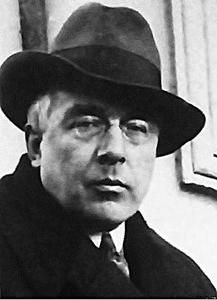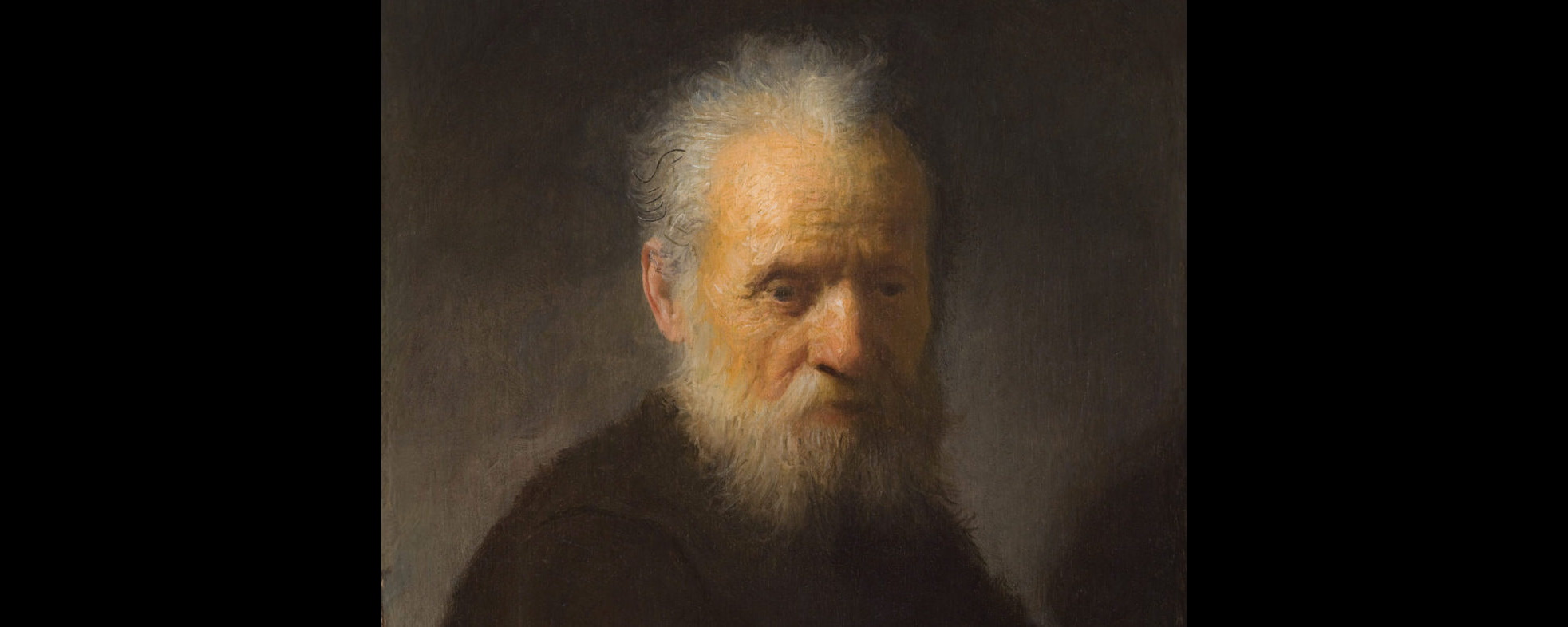Higher Centers, Lower Centers and Comprehension
The blood-dimmed tide is loosed, and everywhere
The ceremony of innocence is drowned;
The best lack all conviction, while the worst
Are full of passionate intensity.
~ The Second Coming, William Butler Yeats
People who find these ideas must begin on a higher level of understanding than that of ordinary life. Such people must already be convinced that nothing is more important than to establish an inner focus, through the use of exercises like self-remembering, being present, and the transformation of suffering.
Only a man who fully realizes the difficulty of awakening can understand the necessity of long and hard work in order to awake. ~ G. I. Gurdjieff
The inner work that leads to a connection to higher centers is individual and takes patience, struggle, and time. There are no shortcuts in this work because it follows natural laws. It is not a way that ends with a single revelatory experience. The achievement of this system is a regular connection with higher centers, and that requires a buildup of a particular energy, and that energy is subject to organic laws, in particular the laws of saturation and diffusion.
Abandoning the System
In Ouspensky’s last meeting, he was said to have abandoned the system. Some of his students believed that he was disappointed in the ideas that he had patiently taught for thirty years. I am not so sure. He may actually have been abandoning his own lower centers. In particular, his powerful command of translating the concepts of the system into understandable ideas and exercises. Through the presence of his higher centers, he may have asked his students to experience, for themselves, a moment of higher perception. He was trying, I think, to give his students a few moments of higher centers.
Shifting One’s Identity
Some years ago, I began to try to separate the perception of higher centers, which survives the death of the body, and the working of lower centers, which die with the body. I wanted to try to begin to place my identity in higher centers. Rather than in the steward, the personality that supports and encourages a connection with higher centers. No longer to place my identity in what can translate the experience of higher centers, but in higher centers themselves.
The first problem was to be able to distinguish the perception of higher centers from that of lower centers . How could I know that what I call higher centers is not actually the working of the lower centers? I started to look at certain activities and to observe what part of me was active.
We might think of the perception of the higher emotional center as being passive, merely observant. While the experience of higher centers is wordless and incorporeal, it requires no further translation. It is a direct communication with reality.
Aspects of Higher Consciousness
When I came to the practical difficulty of observing higher centers, I latched onto the exercise of stopping thoughts. The others–the instinctive, moving, and emotional centers–cannot really be stopped. Using whatever effort could bring me to the higher emotional center, I tried then to distinguish what was higher perception and what was not.
Will, Unity, and Consciousness
This is where my experiment took an unexpected turn. What I observed was so basic that it was surprising that I had never realized it before. Lower centers are meant to take the place of the three aspects of higher consciousness—will, unity, and consciousness—before and during the process of awakening higher centers. In other words the complexity of human psychology is a mechanical representation of what is possible in bodiless state.
And here also is God!!! Again God!… I am man, and such as I am, in contrast to all other outer forms of animal life, created by him in his image. ~ Gurdjieff
Three Forces in the Ray of Creation

The thought came to my mind that in this unusual state I might perhaps find answers to questions which I could not find in the ordinary way. I began to think about the first triad of the ray of creation, about the three forces which made one force. What could they mean? ..Something began to formulate itself in my head but just as I tried to translate this into words everything disappeared. Will, consciousness.. and what was the third?
~ P. D. Ouspensky (In Search of the Miraculous)
The third is unity. What is important about these three forces here is that they also mechanically exist in man in the form of our lower centers. The instinctive/moving centers unify our experiences into a single unit; the emotional center is man’s organ of perception and, when it works rightly, the beginning of consciousness; and the intellectual center gives us the possibility of a direction, a way to steer our actions, or a will.
Body as a Placeholder for the Soul
Even though death is inevitable, we rarely think about how identity will organize itself without a body. We may assume we will receive a soul after death, as we were given a body at birth.
But one part of the material of the soul is will. And will cannot be given. We each have to create it. We need a body for creating a soul because we need to have a way to organize experiences. The role of the body is to create a focal point or unity for identity. In a sense we can say that the body is a temporary placeholder for identity.
We cannot call it unity, that the body provides. Instead of a unified consciousness, the body is a vehicle that holds together all our contradictions. Yet the body provides a convenient way station for consciousness and will to begin to manifest.
Conscious unity is a field of energy that builds and holds in place for longer and longer durations, through the control of attention.
Will and Mind
In higher states, will replaces the mind. The mind plays the part, or should play the part, of the ruling faculty before we develop will. In Gurdjieff’s analogy of the carriage, the driver represents the mind. The driver sits on the box and steers the horses, which represent the emotional center. The carriage represent the instinctive/moving centers. From this analogy we can see what the role of the mind should be. But, more often than not, it does not steer the other centers, but they steer the mind.
“The Future Belongs to the Emotional Center” – P.D. Ouspensky
The emotional center, when it works rightly, works with the same energy (hydrogens) as the higher emotional center. Our ordinary emotional reactions happen without any effort on our part. However, perceptions of the higher emotional center are the result of a controlled field of attention. This control comes from efforts like the transformation of suffering and self-remembering. Really, the emotional center is our door to higher centers. Without gaining some kind of control over our emotions, particularly the expression of negative emotions, awakening is not possible. This is because negative emotions—like anger, depression, and self-pity—burn the energy needed to connect to higher centers.
Generally when people think about higher consciousness, they think of a world without veils, where they can see what has been hidden. This view is not wrong, but incomplete. To succeed with the inner efforts necessary for the emotional center to act as a door to higher perception, two aspects of consciousness, will and unity, are necessary. We need some level of will and unity to transform suffering or to control the expression of negative emotions.
The experience of time in higher states
Much of our understanding of higher states is dependent on being able to experience time in a different way. Self-remembering makes us present to a moment in time. But when higher centers come together with self-remembering, we see the past and the future implied in that moment. Consciousness is seeing everything we know about whatever we are giving our attention to in the moment. Higher centers have access to actual memories, not only to the information gathered by memories. The experience of higher centers is timeless.
In the Image of God
Man is made in the image of God because his centers are a representation of three forces—unity, consciousness, and will. These three forces are the basis for the structures that make up the Absolute’s being. We can even say that man’s psychology is built on the same architecture as the universe. And the universe can be thought about as the experience of the Absolute.
If the lowers centers are a mechanical representation of what is possible in a bodiless state, then then we may assume that the functioning of higher centers is the ultimate goal of man’s journey here. If so, the other aims we pursue to the exclusion of conscious evolution—including our search for personal happiness—will never satisfy the most primary part of our being.
William Page is the author of the blog BePresentFirst. This article is an excerpt from his longer article: https://bepresentfirst.com/higher-centers-lower-centers-and-comprehension/.
Other recent articles of his include: https://fourthwaytoday.org/we-always-make-a-profit/ https://fourthwaytoday.org/difficult-times/ https://fourthwaytoday.org/freedom-of-the-real/ and https://fourthwaytoday.org/memory-and-higher-states/.
